Euclid, has sent back new views of the Universe, demonstrating the ESA (European Space Agency) space mission’s ability to unravel the secrets of the cosmos and enable scientists to hunt for rogue planets, use lensed galaxies to study mysterious matter, and explore the evolution of the Universe.
The new images are part of Euclid’s Early Release Observations. They accompany the mission’s first scientific data and 10 forthcoming science papers. The treasure trove comes less than a year after the space telescope’s launch, and roughly six months after it returned its first full-colour images of the cosmos.
“Euclid is a unique, ground-breaking mission, and these are the first datasets to be made public – it’s an important milestone,” says Valeria Pettorino, ESA’s Euclid project scientist. “The images and associated science findings are impressively diverse in terms of the objects and distances observed.
“They include a variety of science applications, and yet represent a mere 24 hours of observations. They give just a hint of what Euclid can do. We are looking forward to six more years of data to come.”
The full set of early observations targeted 17 astronomical objects, from nearby clouds of gas and dust to distant clusters of galaxies, ahead of Euclid’s main survey. This survey aims to uncover the secrets of the dark cosmos and reveal how and why the Universe looks as it does today.
“This space telescope intends to tackle the biggest open questions in cosmology,” adds Valeria. “And these early observations clearly demonstrate that Euclid is more than up to the task.”
Euclid will trace the hidden web-like foundations of the cosmos, map billions of galaxies across more than one-third of the sky, explore how our Universe formed and evolved over cosmic history, and study the most mysterious of its fundamental components: dark energy and dark matter.
The images obtained by Euclid are at least four times sharper than those we can take from ground-based telescopes. They cover large patches of sky at unrivalled depth, looking far into the distant Universe using both visible and infrared light.
“It’s no exaggeration to say that the results we’re seeing from Euclid are unprecedented,” says ESA director of science, Professor Carole Mundell. “Euclid’s first images, published in November, clearly illustrated the telescope’s vast potential to explore the dark Universe, and this second batch is no different.
“The beauty of Euclid is that it covers large regions of the sky in great detail and depth, and can capture a wide range of different objects all in the same image – from faint to bright, from distant to nearby, from the most massive of galaxy clusters to small planets. We get both a very detailed and very wide view all at once.
“This amazing versatility has resulted in numerous new science results that, when combined with the results from Euclid’s surveying over the coming years, will significantly alter our understanding of the Universe.”
While visually stunning, the images are far more than beautiful snapshots; they reveal new physical properties of the Universe thanks to Euclid’s novel and unique observing capabilities.
The early findings showcase Euclid’s ability to search star-forming regions for free-floating ‘rogue’ planets just four times the mass of Jupiter; study the outer regions of star clusters in unprecedented detail; and map different star populations to explore how galaxies have evolved over time.
They reveal how the space telescope can detect individual star clusters in distant groups and clusters of galaxies; identify a rich harvest of new dwarf galaxies; see the light from stars ripped away from their parent galaxies – and much more.
Euclid produced this early catalogue in just a single day, revealing over 11-million objects in visible light and 5-million more in infrared light. This catalogue has resulted in significant new science.
“Euclid demonstrates European excellence in frontier science and state-of-the-art technology, and showcases the importance of international collaboration,” says ESA director-general Josef Aschbacher. “The mission is the result of many years of hard work from scientists, engineers and industry throughout Europe and from members of the Euclid scientific consortium around the world, all brought together by ESA. They can be proud of this achievement – the results are no small feat for such an ambitious mission and such complex fundamental science. Euclid is at the very beginning of its exciting journey to map the structure of the Universe.”
Abell 2390
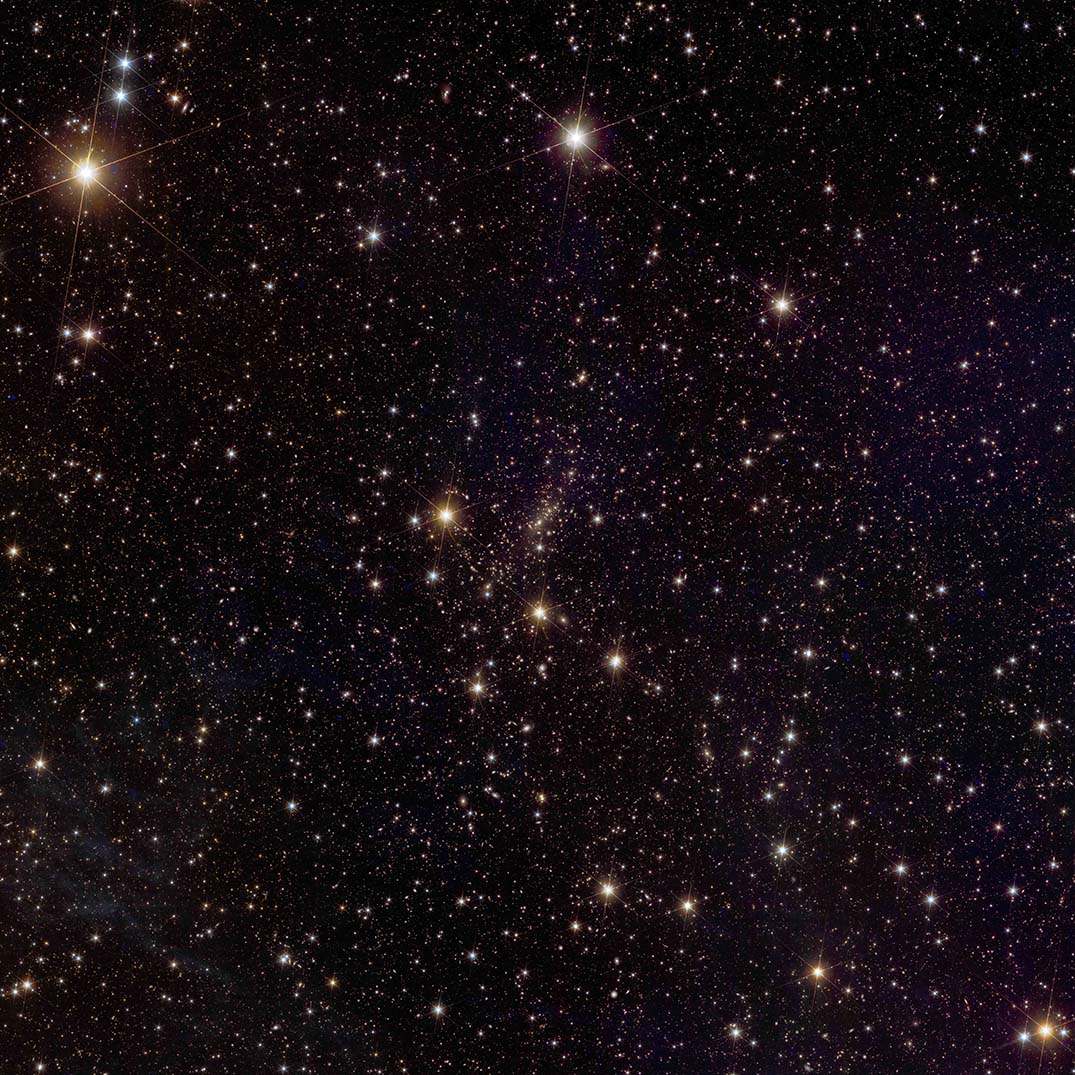
{“shape”: [8200, 8200, 3]}
Euclid’s cutout view of Abell 2390 shows the light permeating the cluster from stars that have been ripped away from their parent galaxies and sit in intergalactic space. Viewing this ‘intracluster light’ is a specialty of Euclid, and these stellar orphans may allow us to ‘see’ where dark matter lies.
Messier 78
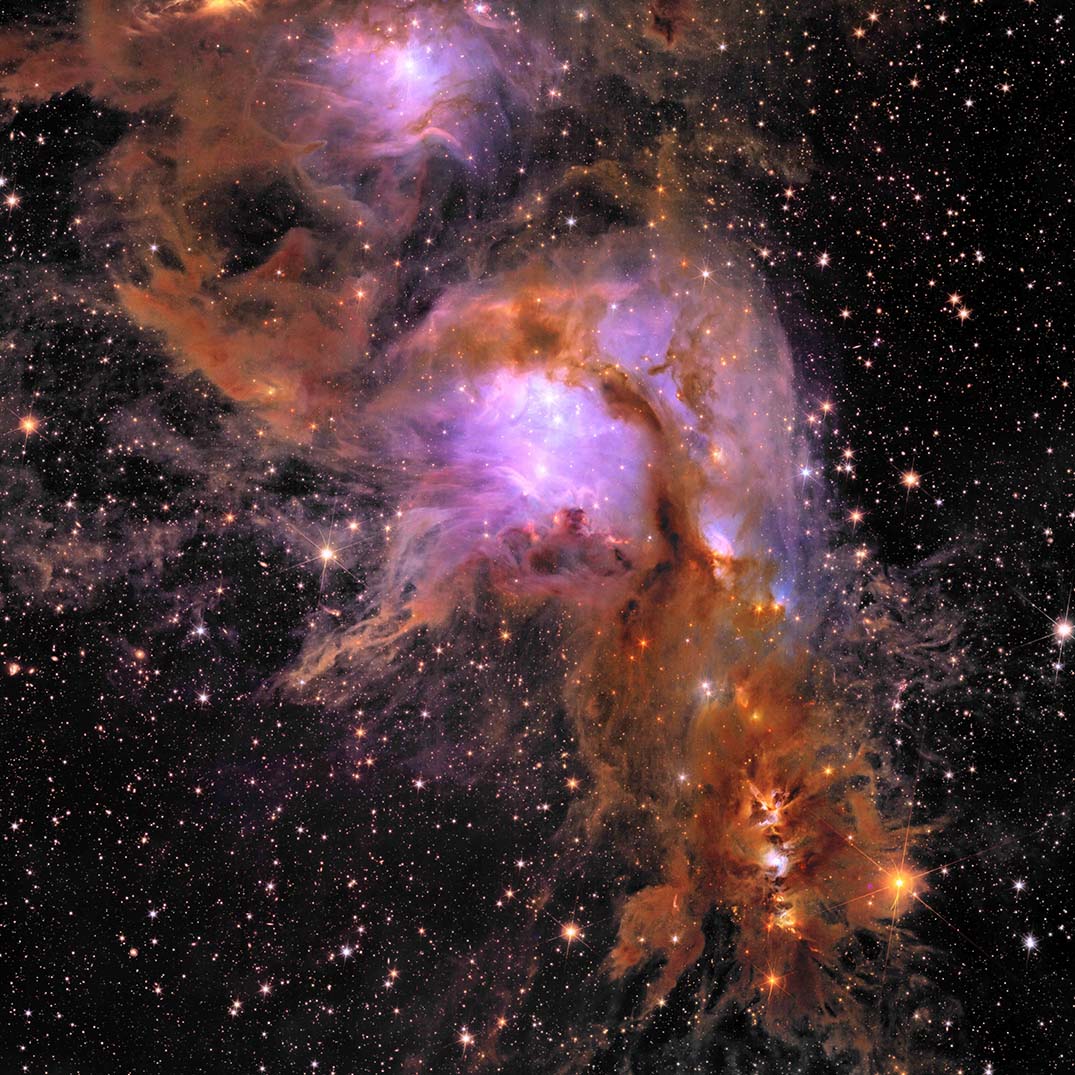
This breathtaking image features Messier 78, a vibrant star nursery enveloped in interstellar dust. Euclid peered deep into this nursery using its infrared camera, exposing hidden regions of star formation for the first time, mapping its complex filaments of gas and dust in unprecedented detail, and uncovering newly formed stars and planets. Euclid’s instruments can detect objects just a few times the mass of Jupiter, and its infrared ‘eyes’ reveal over 300 000 new objects in this field of view alone. Scientists are using this dataset to study the amount and ratio of stars and smaller (sub-stellar) objects found here – key to understanding the dynamics of how star populations form and change over time.
NGC 6744
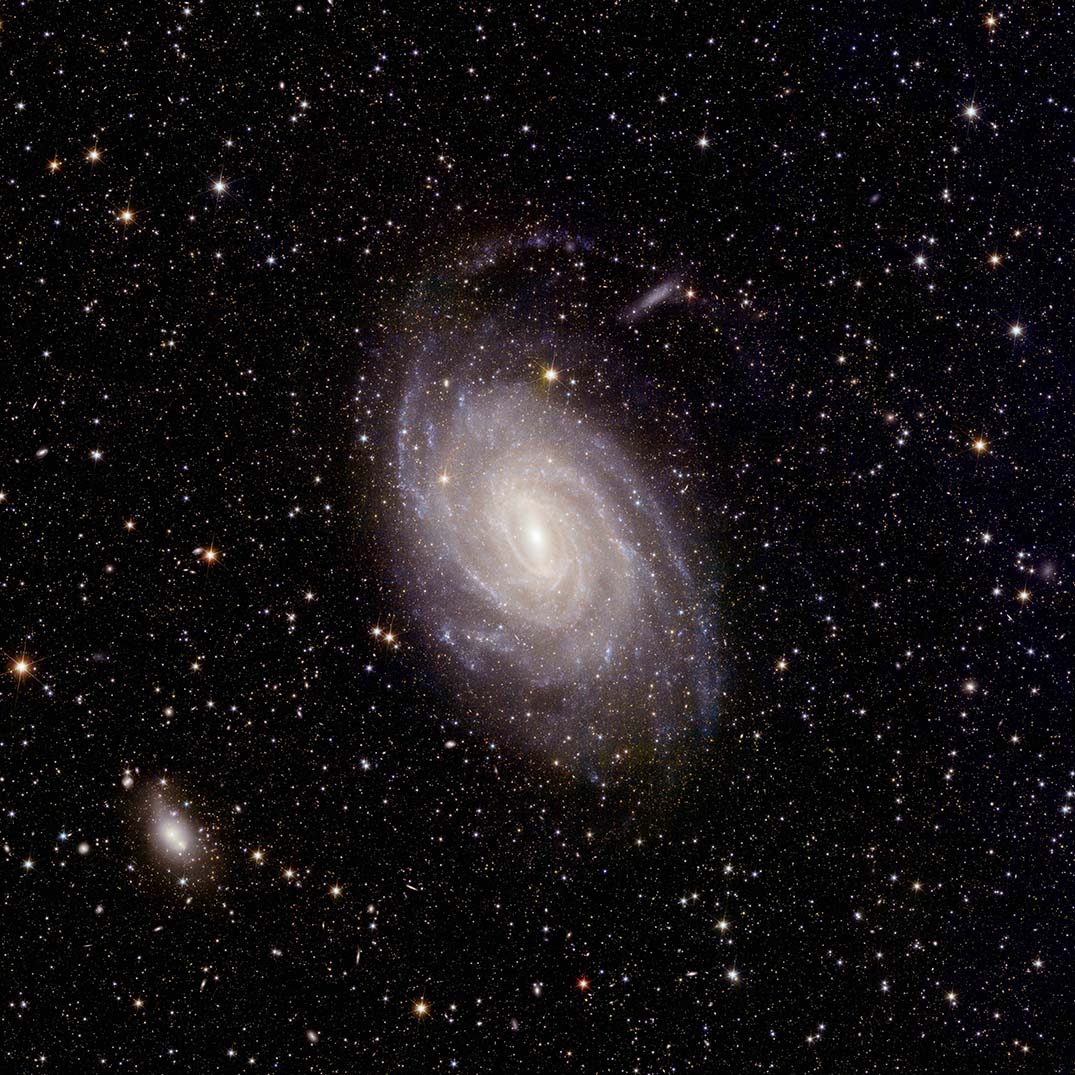
{“shape”: [8200, 8200, 3]}
Abell 2764 (and bright star)
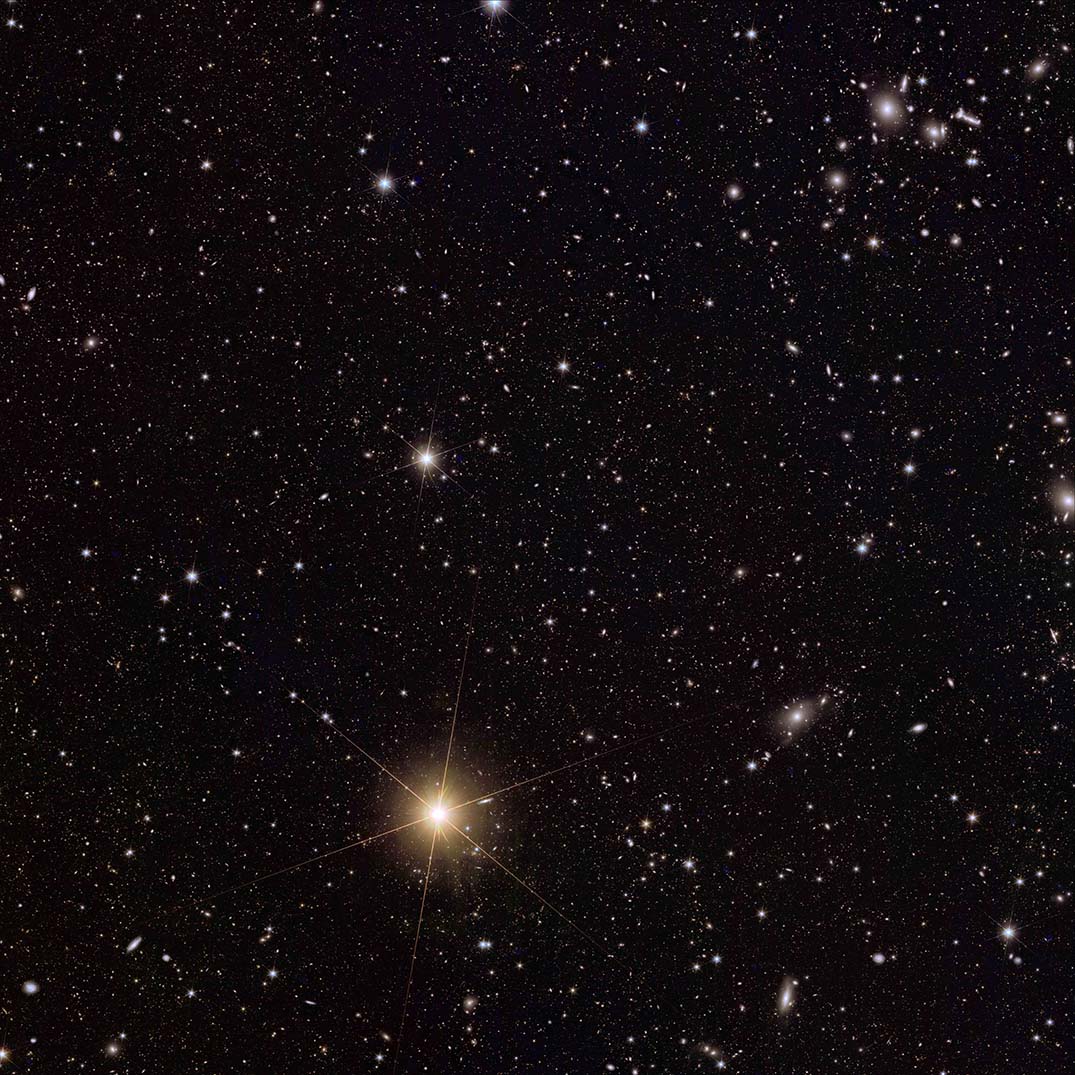
{“shape”: [8200, 8200, 3]}
Also seen here is a very bright foreground star that lies within our own galaxy (V*BP-Phoenicis/ HD 1973, a star within our galaxy and in the southern hemisphere that’s nearly bright enough to be seen with the human eye). When we look at a star through a telescope, its light is scattered outwards into a diffuse circular halo due to the telescope’s optics. Euclid was designed to make this scatter as small as possible. As a result, the star causes little disturbance, allowing us to capture faint distant galaxies near the line of sight without being blinded by the star’s brightness.
Dorado Group
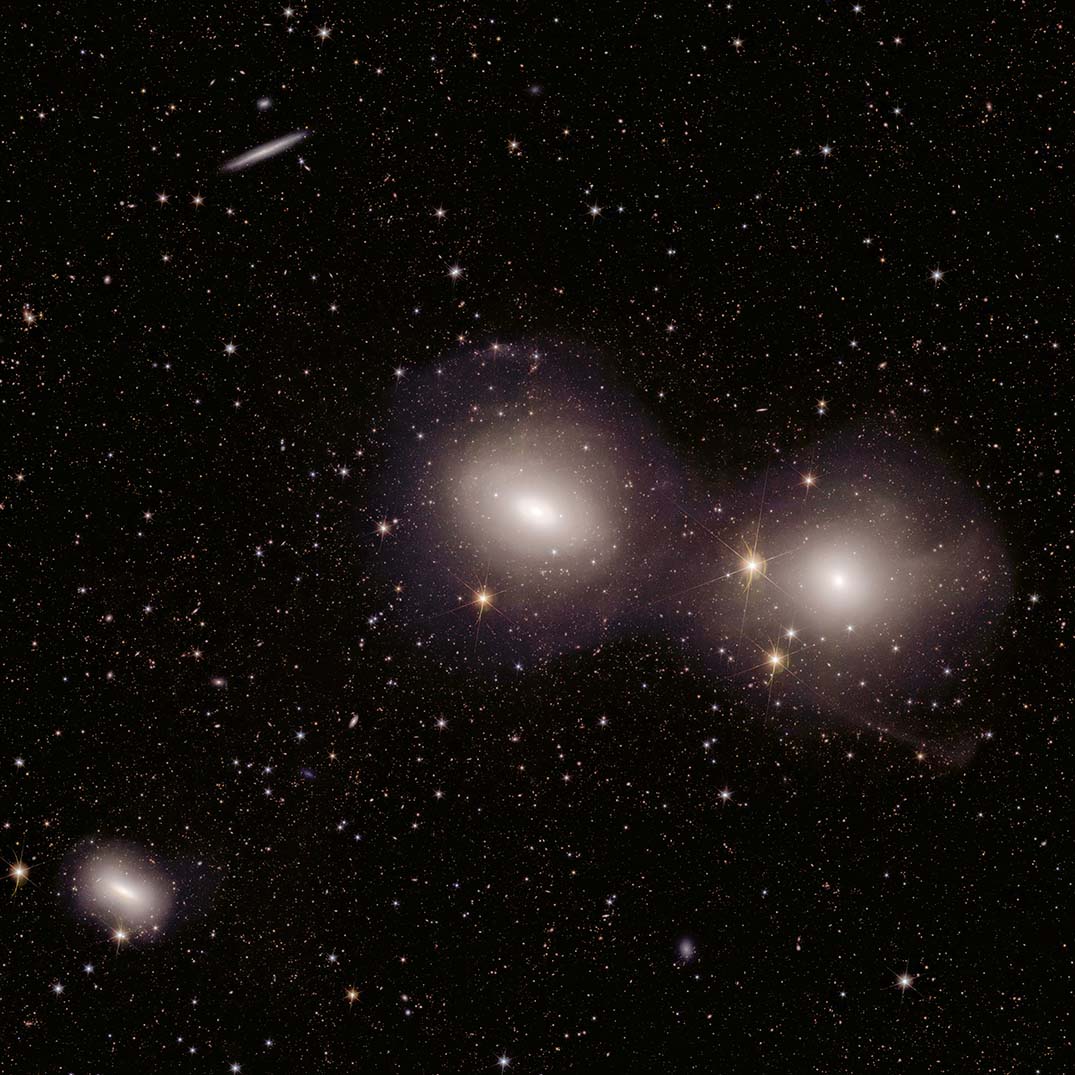
Here, Euclid captures galaxies evolving and merging ‘in action’ in the Dorado galaxy group, with beautiful tidal tails and shells seen as a result of ongoing interactions. Scientists are using this dataset to study how galaxies evolve, to improve our models of cosmic history and understand how galaxies form within halos of dark matter. This image showcases Euclid’s versatility: a wide array of galaxies is visible here, from very bright to very faint. Thanks to Euclid’s unique combination of large field-of-view, remarkable depth, and high spatial resolution, it can capture tiny (star clusters), wider (galaxy cores) and extended (tidal tails) features all in one frame. Scientists are also seeking distant individual clusters of stars known as globular clusters to trace their galactic history and dynamics.

